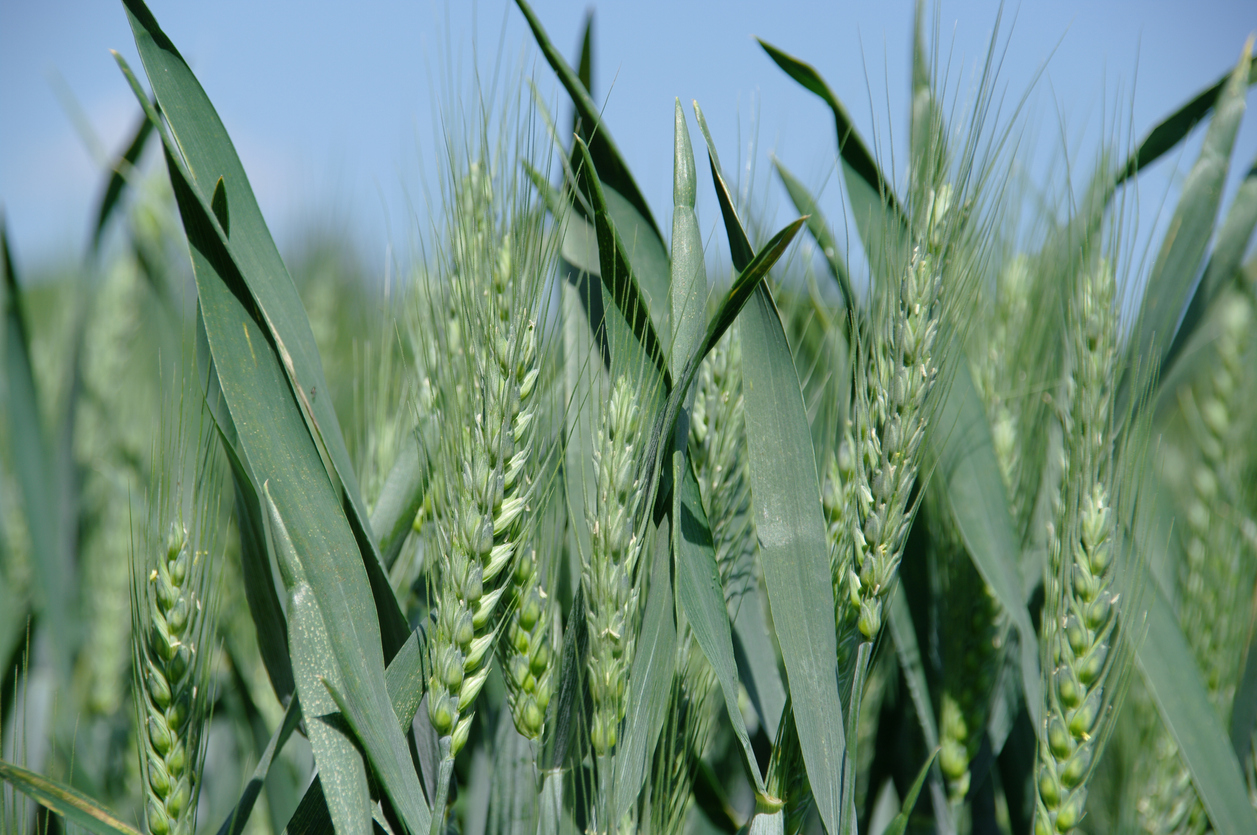Cover Crop or Cash Crop?
Cover crops protect the soil, build organic matter, and promote healthy soils. Some cover crops are used as forages (sorghum, triticale, and clovers) while others are used for grain (barley, milo, oats, wheat, rye). Now a winter cover crop (winter pea) has been bred for human food and another (penny cress) for oil. Several winter cover crops may now offer farmers additional cash while providing environmental benefits.
USDA-Agricultural Research Service (ARS) has been researching winter or autumn-sown peas (Pisum sativum) also called "black peas" or "field peas” which are annual legumes with excellent nitrogen-fixing abilities. These pea species originated in the eastern Mediterranean and western Asia. They should not be confused with cowpeas (Vigna unguiculata), a summer annual which are also known as field peas. Winter peas have been traditionally grown as a cover crop to generate nitrogen, used as animal feed, or used in wildlife plots.
Now winter peas (WP) have been bred to have more potential value as an ingredient for human foods. ARS developed three new WP varieties that offer several beneficial qualities: 1) high protein levels with a nearly complete amino acid profile, 2) peas that lack the allergens common in soybeans and peanuts, 3) peas with a favorable, low glycemic index number, and 4) these WP’s are not genetically modified, all of their development is being done with traditional breeding.
As a food ingredient, the winter peas can be used to provide the protein in protein-starch-fiber slurries used as part of producing nondairy milk, energy bars, non-wheat flour pastas, and baked goods. Some of the food products that contain pea protein as an ingredient include Beyond Meats, numerous brands of protein powder, and many trail mixes.
Dr. Rebecca McGee, ARS researcher has developed three new food grade WP varieties:
- MiCa: A cross of a USDA winter pea with Arwyn, a spring pea with resistance to Pea Seed-borne Mosaic Virus that produces large, smooth green seeds.
- Dint: Produces large, smooth green seeds with a slight dimple.
- Klondike: Produces large, highly desirable dark yellow seeds invoked by the Klondike's connection to the gold rush era. Yellow seeds mean food producers don't have to remove color during processing.
Winter peas would generally be planted in early September, after a wheat crop. Planted like soybeans but in the fall, WP would germinate, get about 3-4 inches tall, and then go dormant until spring. Harvest would be in late summer, early fall with yields and returns similar to soybeans.
Another newly researched and promising crop is Pennycress (PC). Another fall planted annual, PC would be harvested late spring or early summer and be used to produce oil. Pennycress (PC) is planted in August or September and continues its growth until May. This mustard plant is valued for the oil produced from the seeds which can be used as a raw material for biodiesel.
Pennycress helps meet federal and state goals to reduce the production of carbon that contributes to climate change. Most of the research on PC was conducted at Michigan State University. A 30-million-gallon oil processing facility is currently being planned for construction near Flint Michigan by Metro Ag Services. Metro Ag Services would like to see 400 square miles or roughly 256,000 acres planted to PC.
Pennycress naturally grows in disturbed areas with little competition, such as in harvested corn fields lying bare and in unproductive land. Farmers initially perceived the plant as a hassle. During the 1990s, PC was considered a weed that popped up in early spring because fields were bare. Now PC has potential as a cash crop that may be added to the traditional corn and soybean crop rotation. After early harvested corn or soybeans, PC could be planted to cover bare ground and harvested in late spring to allow another cash crop to be planted. As a green cover over the winter, PC protects soil from erosion and improves soil health. PC also absorbs left over nitrogen which improve water quality. Since PC is grown in the off season, it does not compete with other crops for food, yet it produces a renewable oil for biodiesel. About $200 to $300 in extra income may be made by farmers per acre for this crop.
Cover crops are becoming a normal practice. In 2021, about 7.2% of US land acres were planted to cover crops and with a good fall, that acreage number is expected to increase. Combining a new source of farm income with environmental benefits, it pays to keep your soil green year round.
